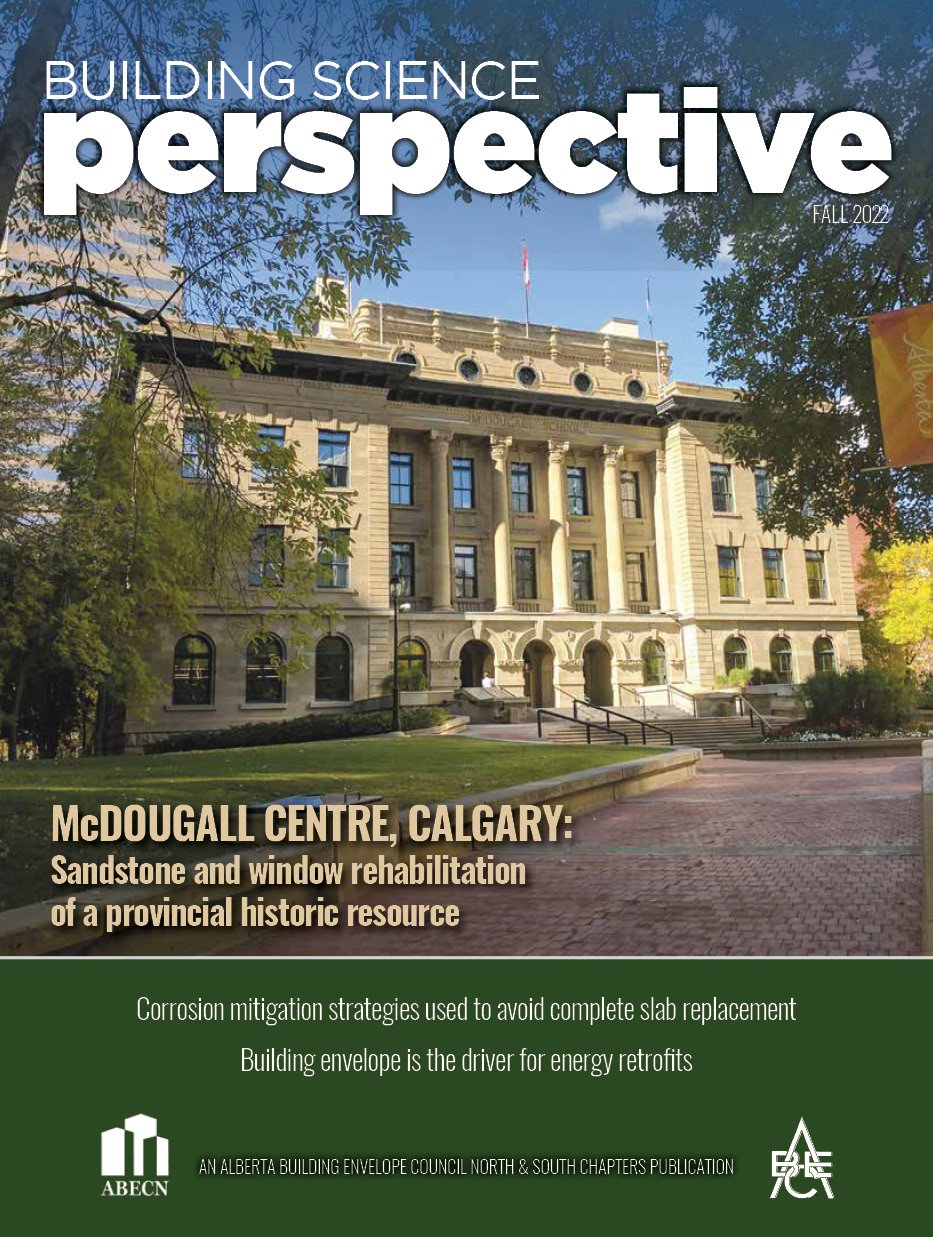Considering the Importance of Periodic Façade Inspections for Tall Buildings

ABEC Building Science Perspective | Fall 2022
Ryan Page, BSc. , E.I.T. | Engineer-In-Training
For tall buildings, façades comprise
the majority of the building envelope, the critical component for structures providing separation between the conditioned and unconditioned environment. Building façades continue to evolve aesthetically, in complexity, but also in efficiency.
However, building façades deteriorate due
to environmental exposure, lack of maintenance, design and construction errors, or a combination of such factors [1]. Deterioration can result in potential unsafe conditions, and if unaddressed, can jeopardize public safety and surrounding properties. Understanding that these conditions can develop throughout the service life of buildings, prompts the need for periodic inspection and assessment of building exterior façades to identify such hazardous conditions.
Building façade deterioration is not specific to any one region, but a widespread phenomenon. Even with the growing knowledge around performance of building façades and their deterioration, a significantly low percentage of cities throughout North America have enacted façade ordinances.
NOTABLE PAST FAÇADE FAILURES
Incidents of façade failures resulting in falling debris pose an endemic problem in the built-up areas of Canada and the United States, with too many failures resulting in tragedy. Table 1 provides a few examples of façade failures over the last decade.
JURISDICTIONAL REQUIREMENTS
Past incidents of façade failure throughout North America have resulted in multiple jurisdictions enacting legislation related to building façade inspection and maintenance. In Canada, Calgary, Alberta, and the Province of Quebec have active façade ordinances. For the United States, cities include Boston, Chicago, Cincinnati, Cleveland, Columbus, Detroit, Milwaukee, New York City, Philadelphia, Pittsburgh, San Francisco, and St. Louis [2].
Comparison of façade ordinances reveals the following common building façade inspection requirements:
- Building height: Five stories or greater (and/or buildings with appurtenances in excess of 60 feet)
- Building age: 10 years or older
- Review periods/intervals: Five-year intervals
A wider variance was observed in other requirements such as:
Minimum inspections methods
- Minimum access methods
- Inspector qualifications: Registered architect or professional structural engineer
- Hazardous condition repair deadlines
- Penalties and fines for violations